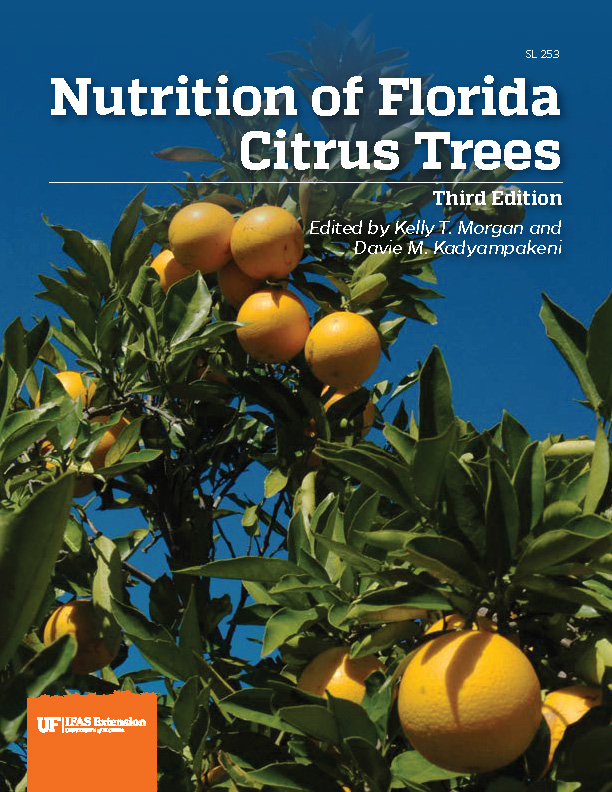Abstract
The information provided in the 2008 2nd edition is still sound for healthy citrus trees under Florida production conditions. Much of the information provided in this document on nutrients, application methods, leaf and soil sampling and irrigation scheduling are also effective for huanglongbing (HLB) affected citrus trees. However, research conducted since HLB was detected in Florida in 2005 has established changes in many production practices, including nutrient rates, irrigation scheduling, soil pH management, and use of Citrus Under Protective Screen (CUPS). Changes to the 2nd edition of SL253 will appear in boxes similar to this one at the beginnings of chapters 2, 6, 8, 9, and 11.
References
Kadyampakeni, D. M., K. T. Morgan, and A. W. Schumann. 2016. "Biomass, Nutrient Accumulation and Tree Size Relationships for Drip- and Microsprinkler-Irrigated Orange Trees." Journal of Plant Nutrition 39: 589-599. https://doi.org/10.1080/01904167.2015.1009112
Kadyampakeni, D. M., K. T. Morgan, A. W. Schumann, P. Nkedi-Kizza, and K. Mahmoud. 2014. "Phosphorus and Potassium Distribution and Adsorption on Two Florida Sandy Soils." Soil Science Society of America Journal 78: 325-334. https://doi.org/10.2136/sssaj2013.07.0259
Kadyampakeni, D. M., K. T. Morgan, A. W. Schumann, P. Nkedi-Kizza, and K. Mahmoud. 2014. "Ammonium and Nitrate Distribution in the Soil Using Drip and Microsprinkler Irrigation for Citrus Production." Soil Science Society of America Journal 78: 645-654. https://doi.org/10.2136/sssaj2013.07.0319
Unless otherwise specified, articles published in the EDIS journal after January 1, 2024 are licensed under a Creative Commons Attribution-NonCommercial-NoDerivs 4.0 International (CC BY-NC-ND 4.0) license.

